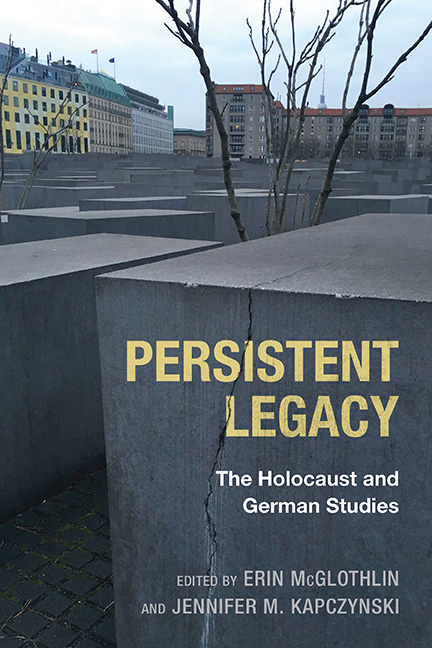Book contents
- Frontmatter
- Contents
- Acknowledgments
- Introduction
- Part I Abiding Challenges
- Part II The Holocaust in German Studies in the North American and the German Contexts
- Part III Disentangling “German,” “Jewish,” and “Holocaust” Memory
- Part IV Descendant Narratives of Survival and Perpetration
- Part V Remediated Icons of Memory
- Part VI Holocaust Memory in Post-Holocaust Traumas
- Notes on the Contributors
- Index
6 - Writing before the Shoah, and Reading After: Charlotte Salomon’s Life? Or Theater? and Its Reception
Published online by Cambridge University Press: 17 June 2021
- Frontmatter
- Contents
- Acknowledgments
- Introduction
- Part I Abiding Challenges
- Part II The Holocaust in German Studies in the North American and the German Contexts
- Part III Disentangling “German,” “Jewish,” and “Holocaust” Memory
- Part IV Descendant Narratives of Survival and Perpetration
- Part V Remediated Icons of Memory
- Part VI Holocaust Memory in Post-Holocaust Traumas
- Notes on the Contributors
- Index
Summary
Artistic Documents
EVERY FIVE YEARS the international art exhibition Documenta takes place in Kassel, Germany. For the duration of each exhibition, Kassel turns into a center of the international art world and displays work by leading and emerging artists in multiple exhibit halls and buildings and in parks, streets, and public squares. Gallery owners, museum curators, and art lovers travel from all over the world to this small German town that then vies for attention with other art-friendly locales such as New York, Basel, or Miami.
The Italian-American curator Carolyn Christov-Bakargiev, known as CCB, was in charge of the dOCUMENTA (13) in 2012. She chose a motto for the exhibit (“The dance was very frenetic, lively, rattling, clanging, rolling, contorted, and lasted for a long time”) and designed a concept that paired older art work, and even some antiquities, with work that was to be shown here for the first time. In making her choice of already existent material, CCB was interested in work that gives evidence of artistic techniques of present-day significance as well as in art that is politically informed. Specifically, she chose items that dealt with, or worked through, historical events that could be termed “traumatic.” Thus she included pictures featuring the photographer Lee Miller in Hitler's bathtub in his Munich apartment, taken by David E. Scherman shortly after Germany's capitulation in 1945, and the traditionally woven tapestries featuring images of Nazi persecution produced by the Swedish-Norwegian artist Hannah Ryggen in the late thirties and forties. Many of the artists included in the show were women, among them contemporary conceptual and video artists who had been working in places that had experienced recent armed conflict or uprisings, such as Mariam Ghani, the Brooklyn-based daughter of the current president of Afghanistan, whose video installation dealt with Kassel and Kabul. Indeed, a small event related to the Kassel exhibitions was also staged as part of dOCUMENTA (13) in Kabul.
- Type
- Chapter
- Information
- Persistent LegacyThe Holocaust and German Studies, pp. 120 - 140Publisher: Boydell & BrewerPrint publication year: 2016



